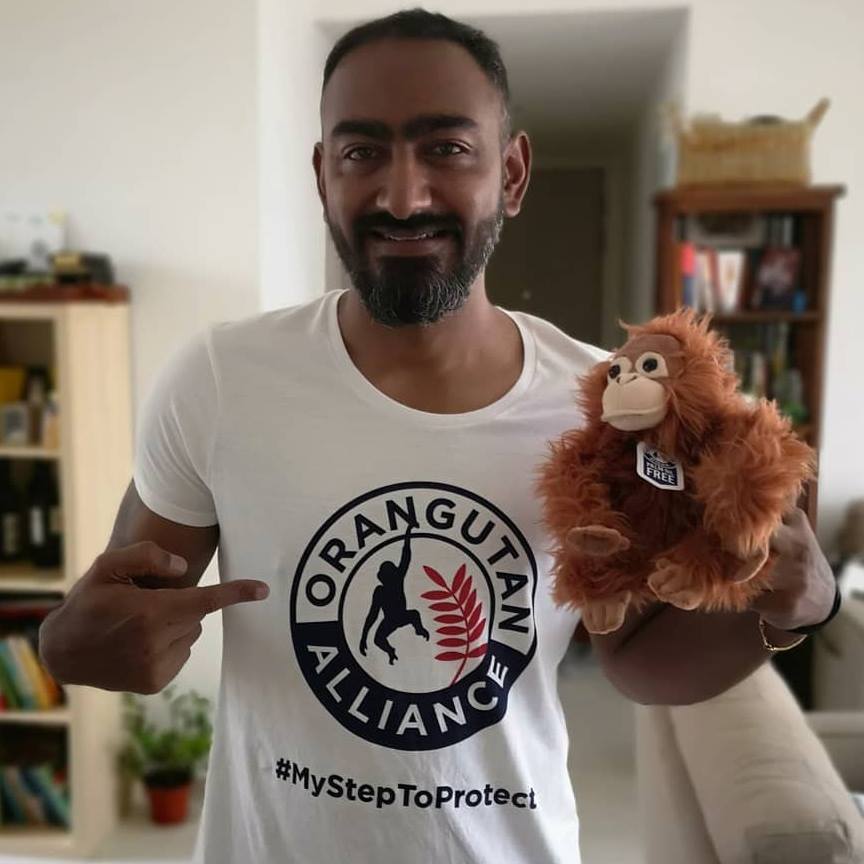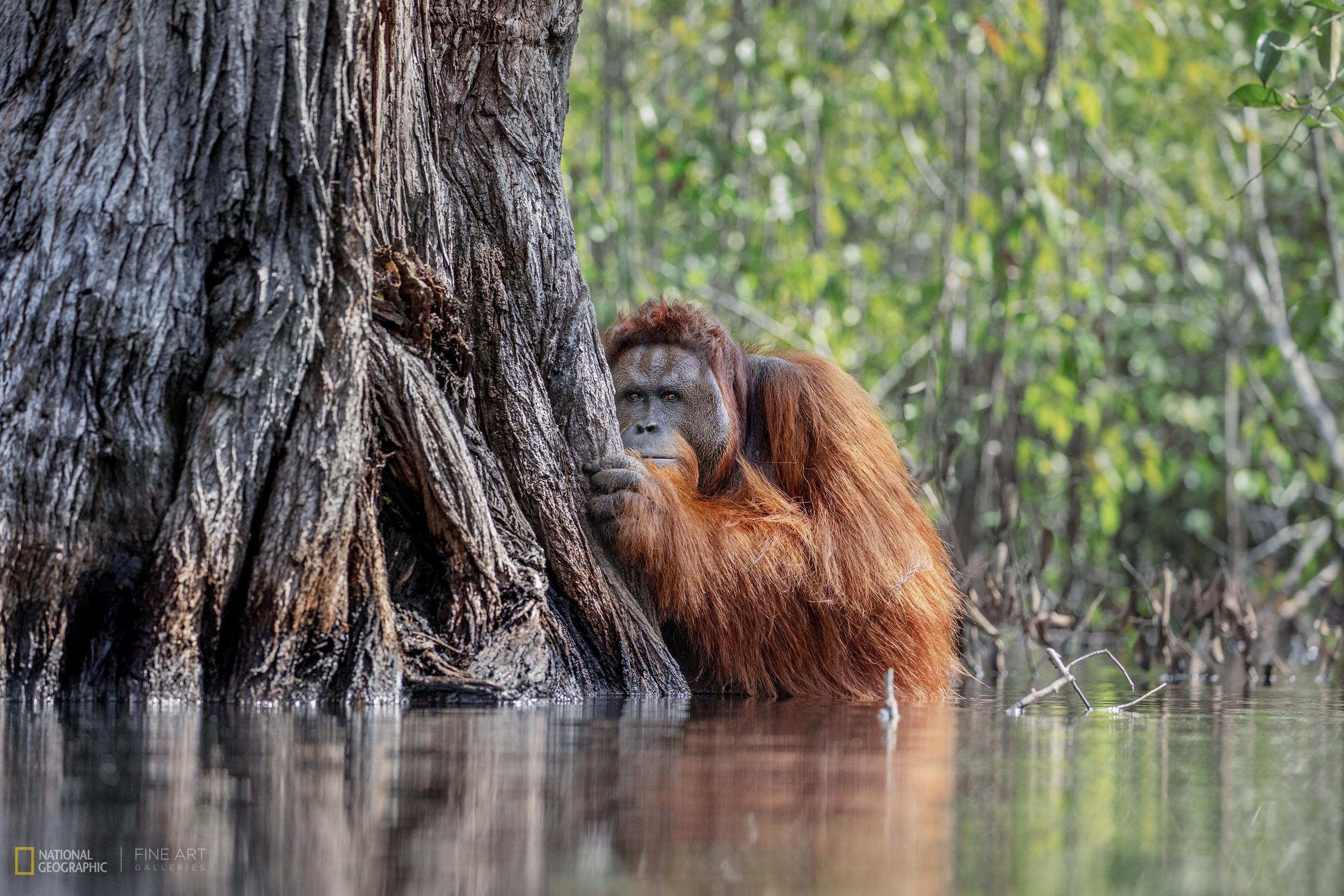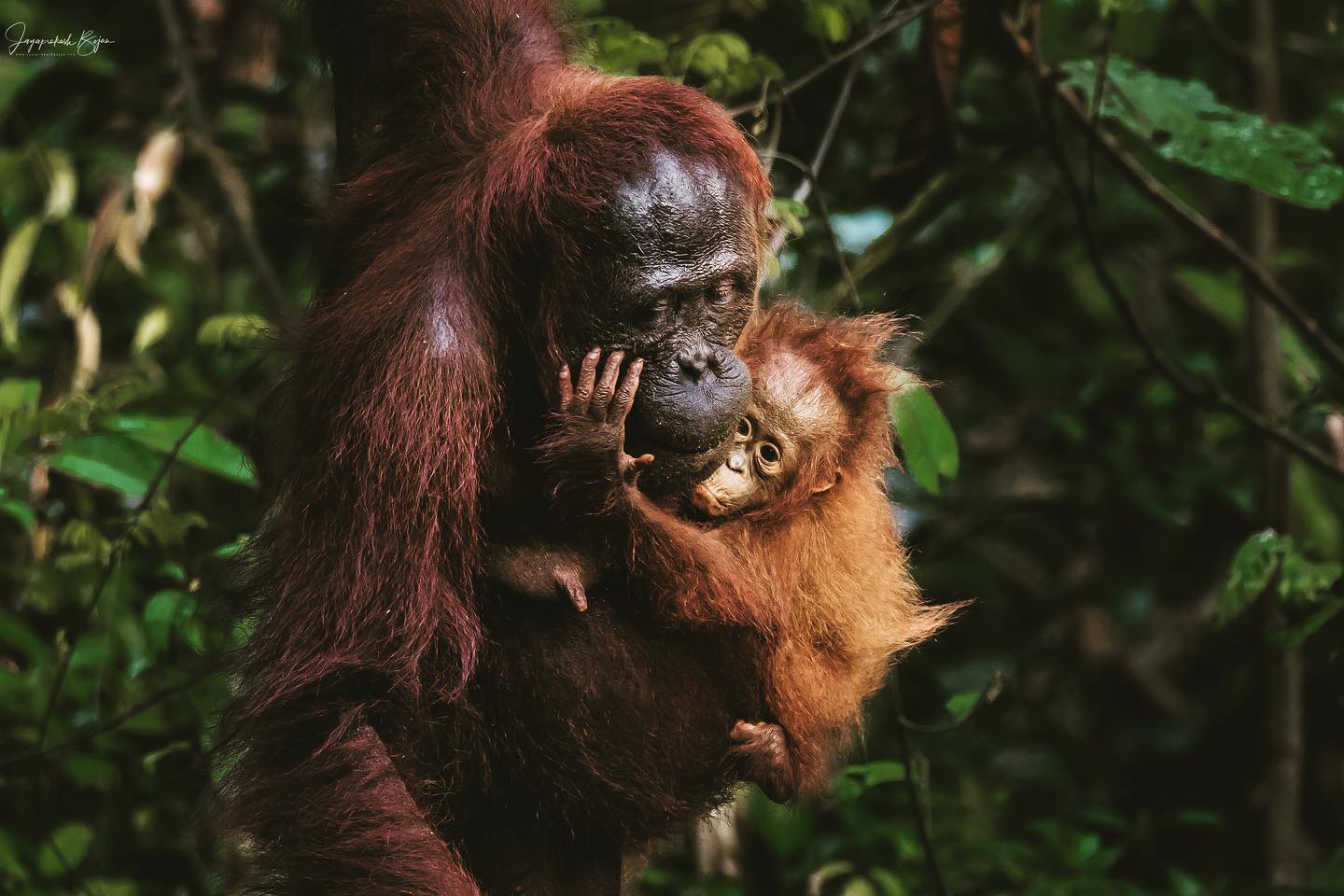Mother and baby, Borneo 2019 Photo: © Jayaprakash Bojan
When Jayaprakash Joghee Bojan won the National Geographic Nature Photographer Of The Year in 2017, his career was put on the fast track overnight. His image of an enormous male orangutan playing hide-and-seek in a river in Borneo was seen by 3.5 million people and put the plight of the orangutan back in the spotlight. Since then, Bojan has focussed his lens almost exclusively on the Red Apes travelling to Borneo every month to work with Orangutan Alliance International and photograph this remarkable species. We caught up with Jayaprakesh in Singapore to find out more about his photography and his orangutan conservation work.
You grew up in India, what was your childhood like, and how did it inspire your passion for the environment?
I grew up in the South of India in a place called Ooty, where I spent a lot of time with my grandparents, who were farmers. Ooty is approximately 2500 meters above sea level and is known for its beautiful mountains and wildlife-rich environment. At a very young age, I’d seen elephants, leopards, and tigers in the wild, so it was a natural progression for me to do what I do today, but that is not what I’d been doing all my life.
What is your background?
I spent about 19.5 years in the corporate world working with some of the big names like Bell computers and Accenture consulting. Photography was a very serious hobby of mine for about a decade, and I spent all my vacations chasing elephants, tigers, and birds at some of the tiger reserves and beautiful lakes in my backyard.

Jayaprakash Bojan is an ambassador for Orangutan Alliance. Photo: © Jayaprakash Bojan
Why are orangutans so special to you?
The more time you spend around orangutans the more you realise how similar they are to human beings. Unfortunately, the first thing that comes to people’s minds when anyone talks about orangutans are the sad stories, but a lot of my efforts are trying to show the remarkable nature of this species. I spend hours waiting to capture an expression on their face or the bond between a mother and her baby. I want people to contribute to their conservation and awareness because they love them, not because they feel sorry for them. This is the reason I’ve become an ambassador for Orangutan Alliance to help raise awareness for the orangutan species.
What did winning the Nat Geo Photographer of the Year award mean to you?
Two of my pics made it to the final that year; one was a cheetah image from Africa and the other, the orangutan image. I told my wife that if I were to win, I’d want the Orangutan image to win because winning these awards ensured visibility not only for me but for the species. After I won that award, everyone started talking about the picture and all of a sudden new interest in orangutans, it put my career on the fast track, and it ignited a new awareness for the plight of the orangutan.

Face to Face, Indonesia – the image that won Jayaprakash Nature Photographer of the Year in 2017. Photo: © Jayaprakash Bojan
What has been your most memorable experience shooting in the wild?
Shooting orangutans has been a highlight for me, and there have been many times I have been in very close proximity to them. It’s a feeling very difficult to put into words.
A few months ago, I made my first documentary film in Borneo, and it was the last day, and I wanted to shoot some marmoset monkeys. There is a saying that when you continuously visualise something, it happens. Well, throughout that trip, I’d imagined these monkeys swimming across a river. Then on my last day, about 45 minutes before leaving on the boat, I saw these monkeys jumping from 50 feet into the river and swimming across with their babies. These moments don’t come about very often in the wild!
Some of my other experiences include hearing Orangutans calling (it’s tough to hear Orangutans calling, and if you do listen to them, you very often cannot see them). I’ve seen some very massive wild males calling. I was slapped on the calf by an alpha male black crested macaque monkey. I’ve had four baby marmoset monkeys pulling and playing with my t-shirt while shooting on the beach, and I’ve had a red fox lick my shoes in Japan!

Mother and baby, Borneo 2019 Photo: © Jayaprakash Bojan
What are some of the challenges of shooting in remote and wild places?
You need to love what you do, to be in my line of work. All the work I do is on foot; I stay in places with lots of mosquitos, I’ve had leeches in my armpits and private parts, I’ve had dengue fever and been hospitalised, countless insect bites and I’ve suffered from dehydration. You need to be a bit crazy! And, it’s not always rewarding; there are times when I spend days and come back with zero pictures. But it makes you a better person. You start to see things differently, and after spending extended periods in the wilderness on your own, you somehow become less restless and impatient. I spend a lot of time away from home, but it has its rewards!
Love wildlife photography? You might enjoy our interview with Wildlife Photographer Shannon Wild.
